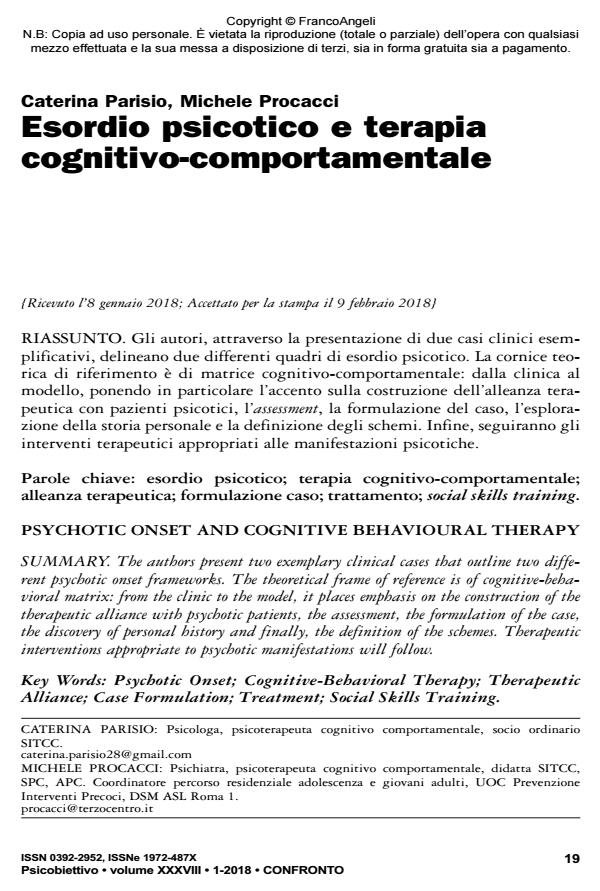Psychotic onset and cognitive behavioural therapy
Journal title PSICOBIETTIVO
Author/s Caterina Parisio, Michele Procacci
Publishing Year 2018 Issue 2018/1
Language Italian Pages 13 P. 19-31 File size 104 KB
DOI 10.3280/PSOB2018-001002
DOI is like a bar code for intellectual property: to have more infomation
click here
Below, you can see the article first page
If you want to buy this article in PDF format, you can do it, following the instructions to buy download credits

FrancoAngeli is member of Publishers International Linking Association, Inc (PILA), a not-for-profit association which run the CrossRef service enabling links to and from online scholarly content.
The authors present two exemplary clinical cases that outline two different psychotic onset frameworks. The theoretical frame of reference is of cognitive-behavioral matrix: from the clinic to the model, it places emphasis on the construction of the therapeutic alliance with psychotic patients, the assessment, the formulation of the case, the discovery of personal history and finally, the definition of the schemes. Therapeutic interventions appropriate to psychotic manifestations will follow.
Keywords: Psychotic Onset; Cognitive-Behavioral Therapy; Therapeutic Alliance; Case Formulation; Treatment; Social Skills Training.
Caterina Parisio, Michele Procacci, Esordio psicotico e terapia cognitivo-comportamentale in "PSICOBIETTIVO" 1/2018, pp 19-31, DOI: 10.3280/PSOB2018-001002